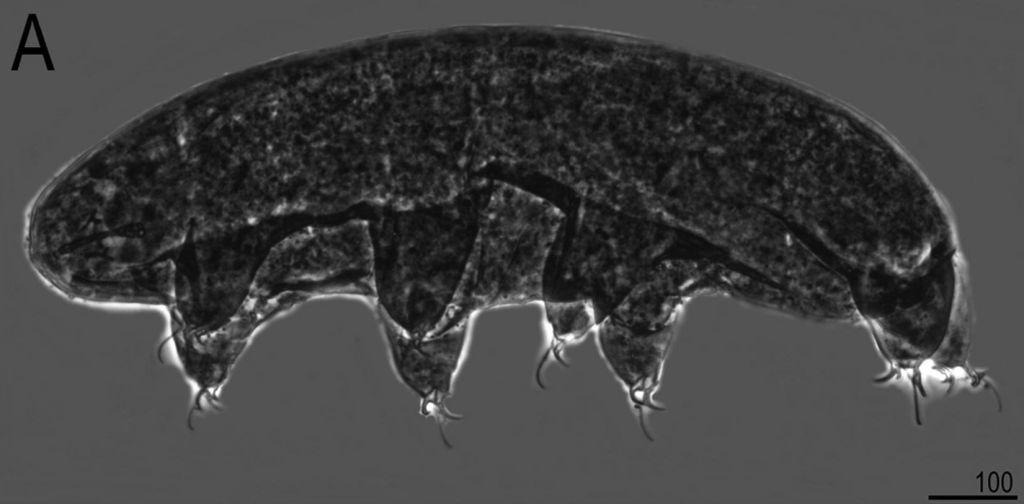Polish scientist Krzysztof Zawierucha has discovered bears hiding in the snow of New Zealand’s glaciers. More specifically, he and his colleagues have described two new genera of Tardigrades living in the glaciers of the Southern Alps. Tardigrades, also known as water bears, are short fat eight legged animals usually overlooked because they are less than a millimetre long. Tardigrada is a sub classification of the Animalia kingdom (the equivalent sub-classification for humans is called Chordata, then the Mammalia class, the Primate order, the Hominidae family, the Homo genus, and finally the Homo sapiens species).
Krzysztof and colleagues collected snow samples from near the top of the Fox, Franz and Whataroa glaciers. When they melted and filtered out the water and looked at the residue under a microscope, staring right back at them were some Tardigrades (or some equivalent of staring, as they didn’t have eyes). Krzysztof, who is a Tardigrade expert, didn’t recognise the species, or even the genus. After careful consideration of their size and body parts Krzysztof figured out that he was looking at two new genera. One was peculiar for its combination of dark colour, stumpy claws, and big mouth. Krzysztof thought the dark colour could be an adaptation to the high ultra-violet radiation conditions on the snow surface. Similar colouring is found in Tardigrade that live in Central Asian glaciers, so it might be considered an example of parallel evolution. He gave the new genera the name Kopakaius, a latinised version of kōpaka, the Māori word for glacier. He gave the specific species (he only had the one example) the full name Kopakaius nicolae where nicolae is a reference to his wife Nicoletta.

The second genera of Tardigrades he called Kararehius, a latinised version of kararehe, the Māori word for animal. This one was transparent and had an unusual combination of stomach sections and claw cuticles. Krzysztof named the species they had collected Kararehius gregorii where gregorii is a reference to his father Grzegorz.

DNA analysis of the bears confirmed their differences from other Tardigrade in the world but the two genera he found were not as different as the body shapes had first indicated. The DNA analysis found that the Kopakaius nicola bears from the Whataroa glacier were genetically distinct from those found on the Fox and Franz Josef glaciers. Krzysztof argues the differences may be associated with the isolation of populations as the previously-connected glaciers have separated into independent units.
Next time you are up in the glaciers, tread carefully and keep a watch out for bears.